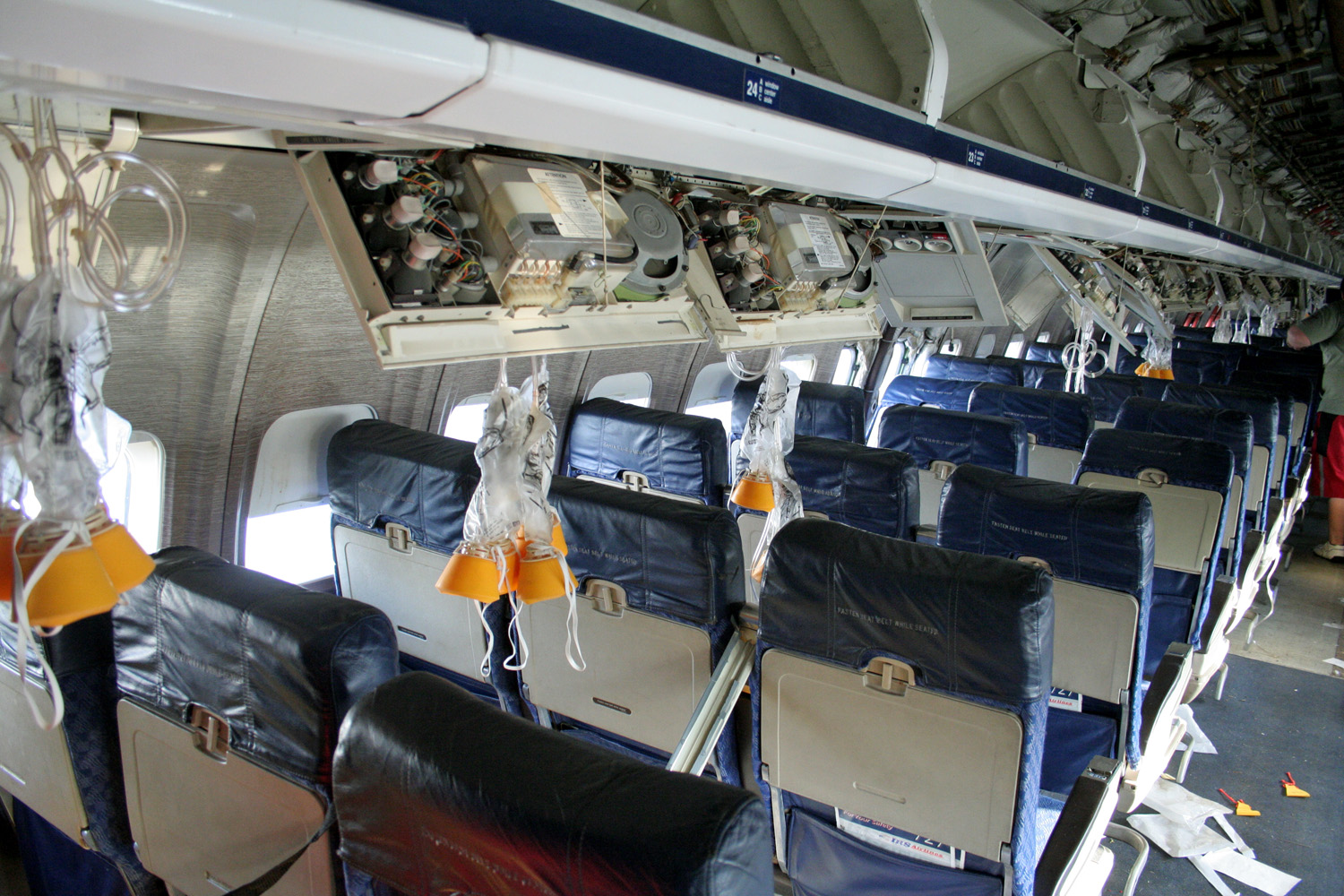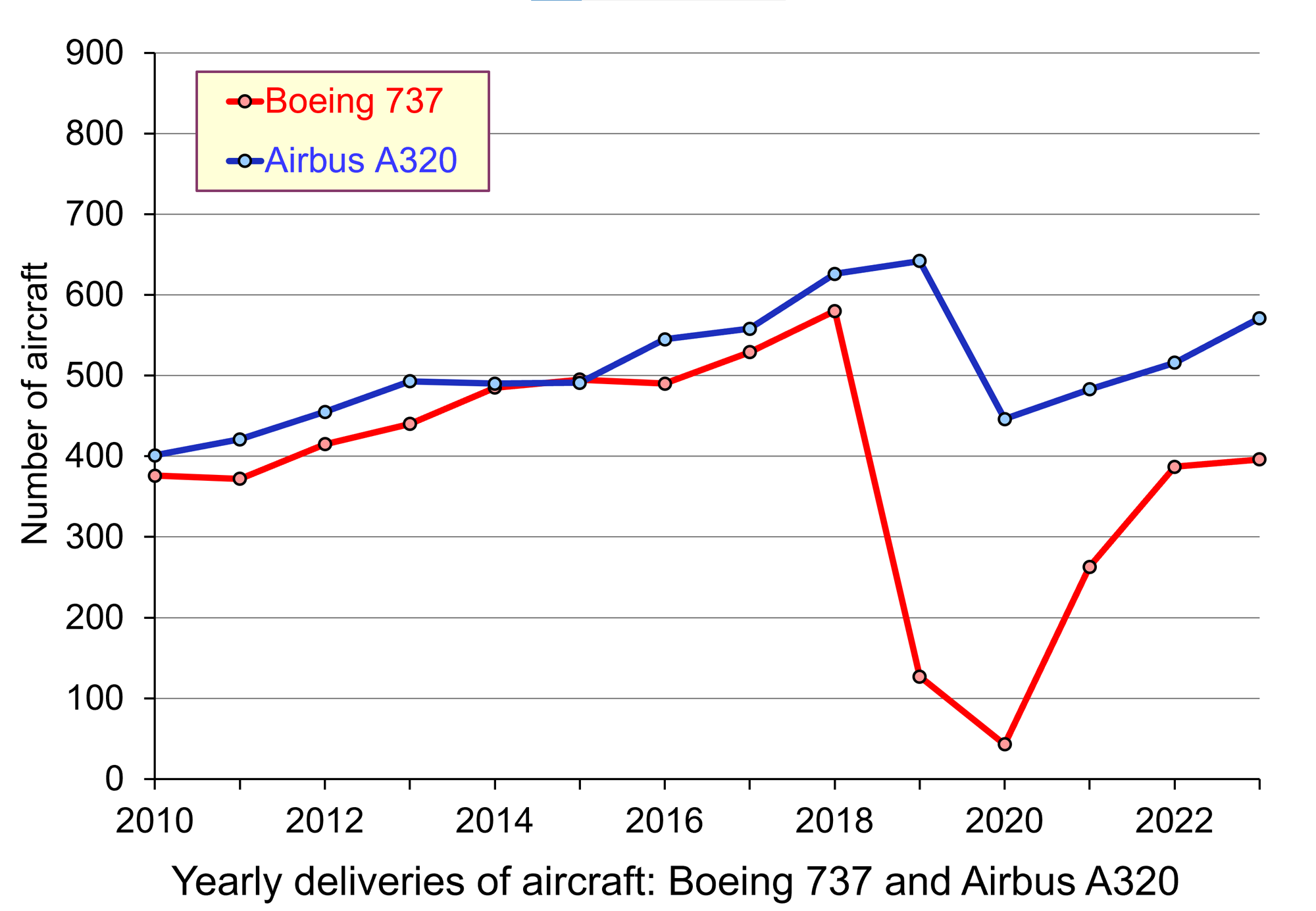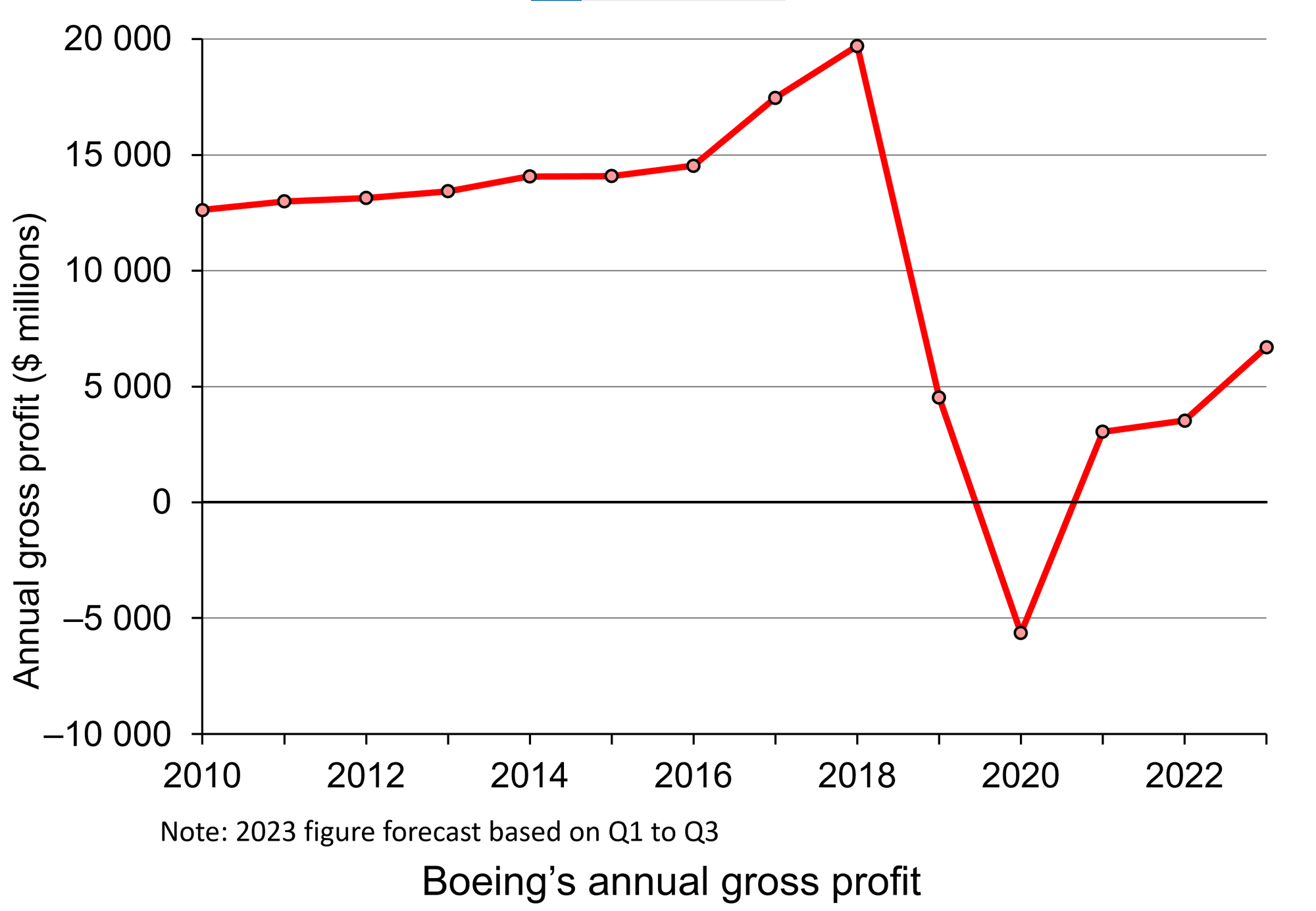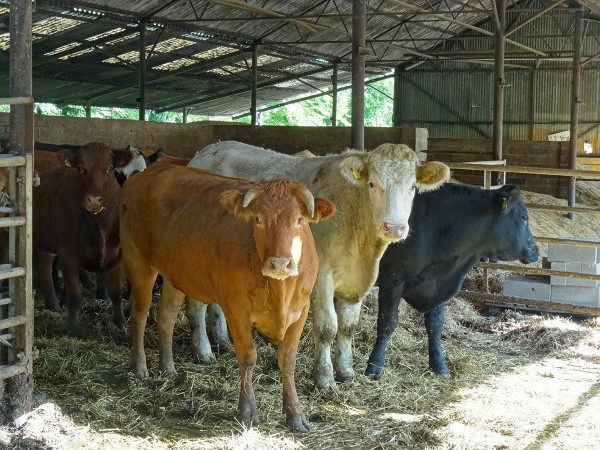 The traditional theory of the firm assumes that firms are profit maximisers. Although, in practice, decision-makers in firms are driven by a range of motives and objectives, profit remains a key objective for most firms – if not maximising profit, at least trying to achieve profit growth so as to satisfy shareholders, retain confidence in the company and prevent the share price from falling. After all, if the company is profitable, it is easier to fund investment, either from ploughed-back profit, borrowing or new share issue. And greater investment will help to drive profits in the future.
The traditional theory of the firm assumes that firms are profit maximisers. Although, in practice, decision-makers in firms are driven by a range of motives and objectives, profit remains a key objective for most firms – if not maximising profit, at least trying to achieve profit growth so as to satisfy shareholders, retain confidence in the company and prevent the share price from falling. After all, if the company is profitable, it is easier to fund investment, either from ploughed-back profit, borrowing or new share issue. And greater investment will help to drive profits in the future.
But does the pursuit of profit and shareholder value as the number-one objective actually lead to higher profit? It could be that a prime focus on other things such as consumer satisfaction, product design and value, innovation, safety, worker involvement and the local community could lead to greater long-term profit than an aggressive policy of marketing, cost cutting and financial rejigging – three of the commonest approaches to achieving greater profits.
Boeing disasters
In 2018 and 2019 there were two fatal crashes involving the new 737 MAX-8 aircraft. On 29 October 2018, Indonesia’s Lion Air Flight 610 crashed into the Java Sea; all 189 people on board died. On 10 March 2019, Ethiopian Airlines Flight 302 similarly crashed; all 157 people on board died. Both disasters were the result of a faulty automatic manoeuvring system. The company and its CEO, Dennis Muilenburg, knew about issues with the system, but preferred to keep planes flying while they sought to fix the issue. Grounding them would have cost the company money. But taking this gamble led to two fatal crashes. This damaged the company’s reputation and cost it billions of dollars.
 The US Securities and Exchange Commission (SEC) investigated the cases and found that the company had made false statements about the plane’s safety and had put ‘profits before people’. But putting profits first ended up in a huge fall in profits, with the 737 MAX grounded for 20 months.
The US Securities and Exchange Commission (SEC) investigated the cases and found that the company had made false statements about the plane’s safety and had put ‘profits before people’. But putting profits first ended up in a huge fall in profits, with the 737 MAX grounded for 20 months.
Since the crashes there have been several other issues with various critical systems, including stabilisation, engines, flight control systems, hydraulics and wiring. In December 2023, Boeing asked airlines to inspect its 737 MAX planes for a potential loose bolt in the rudder control system.
On 5 January 2024, Alaska Airlines Flight 1282 experienced an emergency. A window panel on the 737 MAX-9 aircraft, which replaced an unused emergency exit door, blew out and the cabin depressurised. Fortunately the plane was still climbing and had reached only just under 5000m – less than half of the cruising altitude of over 11 500m. The plane rapidly descended and safely returned to Portland International Airport without loss of life. Had the incident occurred at cruising altitude, the rush of air out of the plane would have been much greater. Passengers would be less likely to be wearing their seat belts and several people could have been sucked out.
The Federal Aviation Administration (FAA) temporarily grounded 171 MAX-9s for inspections. It found that several planes had loose bolts holding the panels in place and could potentially have suffered similar blow outs.
Profits rather than safety?
Critics have claimed that the corporate culture at Boeing prioritised profit over safety. This was made worse in 2001 when company headquarters moved from Seattle to Chicago but production remained at Seattle. The culture at headquarters became sharply focused on financial success. Boeing was under intense competition from Airbus, which announced its more fuel-efficient version of the A320, the A320neo, in 2010, with launch planned for 2015. Boeing’s more fuel-efficient version of the 737, the 737 MAX, was announced in 2011, scheduled for first delivery in 2017. Since then, Boeing has been keen to get the 737 MAX to customers as quickly as possible. Also, Boeing has sought to cut manufacturing costs to keep prices competitive with Airbus.
Despite warnings from some Boeing employees that this competition was leading to corners being cut that compromised safety, Boeing management continued to push for more rapid and cheaper production to fight the competition from Airbus.
The aircraft industry is regulated in the USA by the Federal Aviation Administration (FAA). In 2020, the House Committee on Transportation and Infrastructure produced a detailed report on the industry. It found that the FAA delegated too much safety certification work to Boeing. This was a case of regulatory capture. It was also accused of sharing the goal of promoting the production of US-based Boeing in its competition with European-based Airbus.
Effects on profits
 But rather than a focus on profit leading to greater profits, safety issues have led to groundings of 737s, a fall in sales and a fall in profits. The first chart shows deliveries of 737s slightly lagging A320s from 2010 to 2018. Since then deliveries of 737s have fallen well behind A320s. In terms of orders for all planes, Boeing was ahead of Airbus in 2018 (893 compared with 747). Since then, Boeing has significantly lagged behind Airbus and in 2019 and 2020 cancellations exceeded new orders. The January 2024 incident and subsequent groundings are likely to erode confidence, orders and profits even further.
But rather than a focus on profit leading to greater profits, safety issues have led to groundings of 737s, a fall in sales and a fall in profits. The first chart shows deliveries of 737s slightly lagging A320s from 2010 to 2018. Since then deliveries of 737s have fallen well behind A320s. In terms of orders for all planes, Boeing was ahead of Airbus in 2018 (893 compared with 747). Since then, Boeing has significantly lagged behind Airbus and in 2019 and 2020 cancellations exceeded new orders. The January 2024 incident and subsequent groundings are likely to erode confidence, orders and profits even further.
 As you can see from the second chart, profits fell substantially in 2019, and with COVID fell again in 2020. They have not recovered to previous levels since. Depending on how the market responds to the issue of loose panel bolts on the MAX-9, profits could well fall again in 2024. There will almost certainly be a further erosion of confidence and probably of orders.
As you can see from the second chart, profits fell substantially in 2019, and with COVID fell again in 2020. They have not recovered to previous levels since. Depending on how the market responds to the issue of loose panel bolts on the MAX-9, profits could well fall again in 2024. There will almost certainly be a further erosion of confidence and probably of orders.
The Boeing story is a salutary lesson in how not to achieve long-term profit. A focus on design, quality and reliability may be a better means to achieving long-term profit growth than trying to appeal to shareholders by increasing short-term profits through aggressive cost cutting and hoping that this will not affect quality.
Video and audio
Articles
- ‘All those agencies failed us’: inside the terrifying downfall of Boeing
The Guardian, Charles Bramesco (22/2/22)
- A terrifying 10 minute flight adds to years of Boeing’s quality control problems
CNN, Chris Isidore (8/1/24)
- When A Company Prioritizes Profit Over People: Boeing CEO Tells Congress That Safety Is ‘Not Our Business Model’
Forbes, Jack Kelly (30/10/19)
- ‘Boeing played Russian roulette with people’s lives’
BBC News, Theo Leggett and Tom Burridge (November 2020)
- 737 Max: Boeing refutes new safety concerns
BBC News, Theo Leggett (26/11/21)
- 737 Max: Boeing to pay $200m over charges it misled investors
BBC News, Monica Miller (23/9/22)
- Boeing’s mid-flight blowout a big problem for company
BBC News, Theo Leggett (8/1/24)
- Boeing: US regulator to increase oversight of firm after blowout
BBC News (12/1/24)
- Boeing’s 737 Max Is a Saga of Capitalism Gone Awry
International New York Times, via Deccan Herald, David Gelles (24/11/20)
- Boeing and a dramatic change of direction
johnkay.com, John Kay (10/12/03)
- Congressional report faults Boeing, FAA for 737 Max failures, just as regulators close in on recertification
CNBC, Leslie Josephs (16/9/20)
- Boeing 737 Max: The FAA wanted a safe plane – but didn’t want to hurt America’s biggest exporter either
The Conversation, Susan Webb Yackee and Simon F Haeder (22/3/19)
- Boeing needs to get real: the 737 Max should probably be scrapped
The Conversation, ManMohan S Sodhi (12/1/24)
- Boeing: How much trouble is the company in?
BBC News, Theo Leggett (17/3/24)
Information
Questions
- Why is the pursuit of long-run profit likely to result in different decisions from the pursuit of short-run profit?
- How has Airbus’s strategy differed from that of Boeing?
- How would you summarise Boeing management’s attitude towards risk?
- Is it important to locate senior management of a company at its manufacturing base?
- What is regulatory capture? Is it fair to say that the FAA was captured by Boeing?
- Should Boeing scrap the 737 MAX and design a new narrow-body plane?
 Most of us will have milk in our fridges – it’s a basic product consumed by the majority of people on a daily basis and hence a common feature of most shopping trolleys. As we saw in the post Got milk?, the low price of milk has been causing problems for farmers. This has caused one Morrisons store to take a different approach.
Most of us will have milk in our fridges – it’s a basic product consumed by the majority of people on a daily basis and hence a common feature of most shopping trolleys. As we saw in the post Got milk?, the low price of milk has been causing problems for farmers. This has caused one Morrisons store to take a different approach.
In the increasingly globalised world, British dairy farmers are no longer competing against each other. The global market place means that they are now facing growing competition from abroad and in this global world, supply exceeds demand. Even in the EU, the member states in 2015 are exceeding the milk production levels from 2014. In many markets, we wouldn’t be so concerned about production (or supply) rising, as demand can keep pace. However, in the market for milk, it’s not a product that you consume (that much) more of as your income rises. So, as the world gets richer, demand for milk is not increasing at the same pace as supply – demand in China has collapsed. This means that prices are being forced down. Adding to this global market place, we saw the European Union remove its quotas on milk production, thus boosting supply and Russian bans on imports.
The farmers themselves are in a tricky situation. They are often the small players in the supply chain, with prices being forced down by customers, supermarkets and milk processors. AHDB Dairy, the trade body, says that the average price of milk has decreased to just 23.66p per litre. According to leading industry experts this is well below the costs of production, suggested to be closer to 30p per litre. If these figures are even close to being accurate, then clearly dairy farmers’ costs of production per litre are no longer covered by the price they receive. Every litre of milk produced represents a loss.
The price that supermarkets pay to farmers for milk does vary, with some such as Marks and Spencer and Tesco ensuring that they pay farmers a price above cost. However, Morrisons in Bradford has adopted a new strategy and brand.  Their new milk brand ‘Morrisons Milk for Farmers’ has been launched at a 23p price rise for every four pint bottle. The catch: they will become the first UK retailer where the 23p price hike goes directly to farmers. This represents 10 pence per litre of milk going directly back to the farmers that produce it. This is a bold strategy, but data and surveys do suggest a willingness to pay more from customers, if it means that dairy farmers get a fairer deal. The protests we have seen across the country have certainly helped to generate interest and created awareness of the difficulties that many farmers are facing. Rob Harrison from the NFU said:
Their new milk brand ‘Morrisons Milk for Farmers’ has been launched at a 23p price rise for every four pint bottle. The catch: they will become the first UK retailer where the 23p price hike goes directly to farmers. This represents 10 pence per litre of milk going directly back to the farmers that produce it. This is a bold strategy, but data and surveys do suggest a willingness to pay more from customers, if it means that dairy farmers get a fairer deal. The protests we have seen across the country have certainly helped to generate interest and created awareness of the difficulties that many farmers are facing. Rob Harrison from the NFU said:
“We are pleased that Morrisons has acknowledged the desperate situation that many dairy farmers still find themselves in and recognise that retailers have a big role to play in, helping customers to support the UK dairy sector…
…Research from Mintel revealed over half of people who drink cows milk, would be prepared to pay more than £1 for a four-pint bottle of milk, as long as it is dairy farmers that benefit. This new initiative will enable them to do just that. The 10p a litre extra will go directly back into the dairy sector will make a difference on farm.”
The interesting thing will be to observe the impact on sales following this 23p price rise. We would normally expect customers to look for the cheaper substitutes, but evidence does suggest that British consumers are willing to pay the price premium if it means helping British farmers. A similar strategy adopted for British Cheddar Cheese proved fruitful and over the coming weeks, we will see if the average consumer is willing to pay directly the dairy farmers. The following articles consider this topic.
Morrisons milk for farmers brand goes nationwide at £1.12 for four pints The Grocer, Carina Perkins (12/10/15)
Morrisons to create new milk brand for farmers BBC News (11/10/15)
Milk price row: farming union leaders meet Morrisons bosses The Guardian, Graham Ruddick (11/10/15)
Morrisons to sell new ‘Milk for farmers’ brand to support British dairy producers Independent, Loulla-Mae Eleftheriou-Smith (11/8/15)
Government to give one-off milk payment for dairy farmers as Morrisons launches premium milk brand City A.M., Catherine Neilan (12/10/15)
New Morrisons milk brand pays farmers more The Yorkshire Post (12/10/15)
Questions
- Using demand and supply analysis, explain which factors have caused the price of milk to fall.
- When incomes rise, the demand for milk does not really change. What does this suggest about the income elasticity of demand for milk and the type of product that it is?
- If prices rise and sales also rise, does this suggest that British milk has an upward sloping demand curve?
- If we do see little effect on the demand for milk following Morrisons 23p price rise, what conclusion can we come to about the price elasticity of demand?
- Why do supermarkets and milk processors have the power to force down prices paid to dairy farmers?
- What type of market structure do you think dairy farmers compete in?
- If dairy farmers are unable to sell a litre of milk for a higher price than it costs to produce, is it a sensible strategy for them to remain in the market?
 46p – that buys you a First Class stamp. However, the price will now rise to 60p and the price of a Second Class stamp will increase to 50p from 36p, as Ofcom lifts some price caps. These significant price rises have seen shortages of stamps emerging across the country. As people anticipate the price rise, individuals and businesses are buying up stamps while they remain relatively cheap.
46p – that buys you a First Class stamp. However, the price will now rise to 60p and the price of a Second Class stamp will increase to 50p from 36p, as Ofcom lifts some price caps. These significant price rises have seen shortages of stamps emerging across the country. As people anticipate the price rise, individuals and businesses are buying up stamps while they remain relatively cheap.
The problem is that this has started to result in a stamp shortage, so much so that the Royal Mail has now begun rationing retailers’ supply of stamps, capping each retailers’ supply this month to 20% of its annual allocation. A Royal Mail spokesman said:
“We are more than happy for retailers to receive the normal commercial return they obtain on stamps and no more than that … That is why we have put in place a prudent allocation policy to safeguard Royal Mail’s revenues and ensure there are more than enough stamps for people to buy both now and in the future.”
With postage volumes falling, as individuals turn to other methods of communication, Royal Mail says that this price rise is essential to keep this universal service going. Revenues have been low and the Royal Mail has been loss-making for some time.
However, while the price rise may help the Royal Mail, many businesses may suffer in its place. One optician, who sends out approximately 5,000 reminders to patients each year intends to bulk-buy 10,000 stamps in the hopes of saving some £1,400 when prices of stamps rise. An IT worker bought 20 books of 12 first-class stamps and said ‘If I could afford it, I would buy a lot more’. Many are unhappy at the ‘shameless profiteering at the public’s expense’, but whatever your opinion about the price rise, it does make for an interesting case of demand and supply. The following articles consider this stamp shortage.
Man’s 10,000 stamp panic: stampede for stamps leaves a 1st class mess as Royal Mail introduces rationing ahead of 30% price rise Mail Online, Colin Fernandez and John Stevens (15/4/12)
Stamps rationed by Royal Mail in run up to price rise (including video) BBC News (13/4/12)
Stamp rationing could hit pensioners Telegraph, James Hall (14/3/12)
Stamp sales limited ahead of price hike Sky News (13/4/12)
How stamp collecting came unstuck Guardian, Hunter Davies (13/4/12)
Royal Mail limits supply of stamps ahead of price rise Telegraph, James Hall and Andrew Hough (12/4/12)
’Profiteering’ Royal Mail limits supply of stamps before price rise Guardian, David Batty (13/4/12)
Royal Mail’s stamp price rises come into force BBC News (30/4/12)
How businesses will be affected by Royal Mail’s changing prices BBC News, Catherine Burns (28/4/12)
Questions
- If people expect prices to rise, what will happen to the demand curve? Illustrate this idea on a demand and supply diagram?
- If suppliers anticipate a price rise, what would their best strategy be?
- On a demand and supply diagram, illustrate the shortage of stamps that has emerged. If left to the free market, what should happen to the price of stamps?
- Why could pensioners and those in rural areas be the most adversely affected by this shortage and price rise?
- Why could ‘children and new collectors’ be priced out of the market?
- Why will small businesses be affected by this price hike? How could their customers be affected?
 From April 2012, the average household water bill will rise by 5.7% to approximately £367. With households already feeling the squeeze this news is more than unwelcome. The increase in prices will not be standardized across England and Wales. Instead some households will suffer more than others, as their water providers increase prices significantly more than those in other areas.
From April 2012, the average household water bill will rise by 5.7% to approximately £367. With households already feeling the squeeze this news is more than unwelcome. The increase in prices will not be standardized across England and Wales. Instead some households will suffer more than others, as their water providers increase prices significantly more than those in other areas.
There has been significant investment in the water industry over the past few years and if this is to continue, funding is required: hence the price hikes. More investment is taking place in some areas than in others and so this goes some way to explaining why some households will see their bills rise by a relatively larger amount. Ofwat, the water regulator, has said that if the investment that these price rises are paying for doesn’t materialize action will be taken. In the context of the current financial situation, consumer groups are understandably concerned about the impact this may have on the lowest income households. Tony Smith, the Chief Executive of the Consumer Council for Water has said:
‘We’ll be making sure that customers get some benefits from this and also that companies step up their help for customers with affordability problems’.
The following articles consider this issue.
How to cut your water bill The Telegraph, Kara Gammell (31/1/12)
Water bills rise by average of 5.7% Guardian, Jill Insley (31/1/12)
Water meter case study: ‘They have set the charges too high’ Guardian, Jill Insley (31/1/12)
Water bills to rise by 5.7 per cent Financial Times, Elaine Moore (31/1/12)
Welsh water imposes lowest increase The Press Association (31/1/12)
Questions
- Why are household incomes already being squeezed?
- Why would you suggest that the RPI and not the CPI has been used to make up the price rises?
- Why are there such wide variations in the amount that consumers are currently charged in different parts of the country? Do you think this is fair? You may find it useful to look at a previous blog on the site
- What is the role of the regulator, Ofwat?
- Can Ofwat’s decision to allow prices to rise by more than the RPI be justified?
 In an earlier blog Energy profits margins up by over 700% we analysed the increasing pressure on many households as they saw their energy bills increase in price year on year. This helped the big six energy companies achieve a 700% rise in their profits.
In an earlier blog Energy profits margins up by over 700% we analysed the increasing pressure on many households as they saw their energy bills increase in price year on year. This helped the big six energy companies achieve a 700% rise in their profits.
However, it also sparked interest by the regulator Ofgem, which was looking to ensure that consumers found it easier to make price comparisons and create a more competitive market. One issue that Ofgem were looking into was how to make the energy sector more open to competition, given that the big six companies own the power stations and hence this acts as a barrier to the entry of new firms.
The latest announcements from some of the big energy companies will therefore come as a pleasant turn of events for Ofgem. On Wednesday January 11th 2012, EDF announced that it would be cutting its energy prices by 5% from 7th February in response to a fall in wholesale costs. Only a day later, Npower announced its plans to cut its tariffs by 5% from 1st February. British Gas cut its prices by 5% with immediate effect and SSE will reduce its gas prices by 4.5% from March 26th.
Is this a sign that the market is becoming more competitive thanks to Ofgem or is there another explanation? For the past 2 winters, temperatures have been consistently below freezing and hence demand for gas/electricity was at an all time high, speaking concerns of gas shortages. However, with the mild winter we are currently experiencing (I hope I haven’t jinxed it!) demand for heating etc has been significantly lower, which has reduced wholesale costs and the big six companies have begun to pass these savings on to their customers. Yet, despite this seemingly good news, are they being as ‘kind’ as we think? Most of the companies are cutting their prices by about 5%, yet wholesale prices fell by significantly more than that. Furthermore, over the past few years, customers have seen their tariffs increase significantly – by a lot more than 5%. To some extent, this confirms the criticism levelled at the energy sector – when costs rise, they are quick to pass on the full costs to their customers. But, when costs fall, they are slow to pass on only a fraction of their cost savings. The following articles consider this issue.
Npower will cut gas prices by 5% BBC News (13/1/12)
EDF cuts gas price by 5% Reuters, Karolin Schaps and Henning Gloystein (11/1/12)
British Gas readies push to promote price cut MarketingWeek, Lara O’Reilly (13/1/12)
British Gas cuts prices by 5% Independent (13/1/12)
Energy suppliers do battle in the war of modest price cuts The Telegraph, Emily Godsen (13/1/12)
British Gas and SSE follow EDF Energy price cut Financial Times, Guy Chazan and Sylvia Pfeifer (11/1/12)
British Gas cuts electricity prices, but keeps gas on hold Guardian, Hillary Osborne (12/1/12)
British gas and SSE announce price cuts (including video) BBC News (12/1/12)
More power firms cut energy tariffs The Press Association (12/1/12)
Questions
- In which market structure would you place the energy sector? Explain your answer.
- What is the role of Ofgem? What powers does it (and the other regulators have)?
- Using a demand and supply diagram to help you, explain why wholesale costs have fallen.
- Why have the energy companies only passed on about 5% of cost savings to their customers, despite falls in wholesale costs of significantly more than that?
- Do you think price wars are likely to break out in this sector? Are they in the interests of consumers?
- Why did energy prices increase so quickly last year and the year before? Use a diagram to help you.
 The traditional theory of the firm assumes that firms are profit maximisers. Although, in practice, decision-makers in firms are driven by a range of motives and objectives, profit remains a key objective for most firms – if not maximising profit, at least trying to achieve profit growth so as to satisfy shareholders, retain confidence in the company and prevent the share price from falling. After all, if the company is profitable, it is easier to fund investment, either from ploughed-back profit, borrowing or new share issue. And greater investment will help to drive profits in the future.
The traditional theory of the firm assumes that firms are profit maximisers. Although, in practice, decision-makers in firms are driven by a range of motives and objectives, profit remains a key objective for most firms – if not maximising profit, at least trying to achieve profit growth so as to satisfy shareholders, retain confidence in the company and prevent the share price from falling. After all, if the company is profitable, it is easier to fund investment, either from ploughed-back profit, borrowing or new share issue. And greater investment will help to drive profits in the future. The US Securities and Exchange Commission (SEC) investigated the cases and found that the company had made false statements about the plane’s safety and had put ‘profits before people’. But putting profits first ended up in a huge fall in profits, with the 737 MAX grounded for 20 months.
The US Securities and Exchange Commission (SEC) investigated the cases and found that the company had made false statements about the plane’s safety and had put ‘profits before people’. But putting profits first ended up in a huge fall in profits, with the 737 MAX grounded for 20 months.  But rather than a focus on profit leading to greater profits, safety issues have led to groundings of 737s, a fall in sales and a fall in profits. The first chart shows deliveries of 737s slightly lagging A320s from 2010 to 2018. Since then deliveries of 737s have fallen well behind A320s. In terms of orders for all planes, Boeing was ahead of Airbus in 2018 (893 compared with 747). Since then, Boeing has significantly lagged behind Airbus and in 2019 and 2020 cancellations exceeded new orders. The January 2024 incident and subsequent groundings are likely to erode confidence, orders and profits even further.
But rather than a focus on profit leading to greater profits, safety issues have led to groundings of 737s, a fall in sales and a fall in profits. The first chart shows deliveries of 737s slightly lagging A320s from 2010 to 2018. Since then deliveries of 737s have fallen well behind A320s. In terms of orders for all planes, Boeing was ahead of Airbus in 2018 (893 compared with 747). Since then, Boeing has significantly lagged behind Airbus and in 2019 and 2020 cancellations exceeded new orders. The January 2024 incident and subsequent groundings are likely to erode confidence, orders and profits even further. As you can see from the second chart, profits fell substantially in 2019, and with COVID fell again in 2020. They have not recovered to previous levels since. Depending on how the market responds to the issue of loose panel bolts on the MAX-9, profits could well fall again in 2024. There will almost certainly be a further erosion of confidence and probably of orders.
As you can see from the second chart, profits fell substantially in 2019, and with COVID fell again in 2020. They have not recovered to previous levels since. Depending on how the market responds to the issue of loose panel bolts on the MAX-9, profits could well fall again in 2024. There will almost certainly be a further erosion of confidence and probably of orders. Boeing seems to be focused on profits rather than safety
Boeing seems to be focused on profits rather than safety Downfall: The Case Against Boeing
Downfall: The Case Against Boeing Post Film Discussion with Rory Kennedy – Downfall: The Case Against Boeing
Post Film Discussion with Rory Kennedy – Downfall: The Case Against Boeing SocialFlight Live! Downfall: The Case Against Boeing
SocialFlight Live! Downfall: The Case Against Boeing PM programme
PM programme Profit Over Safety: Boeing Supplier Ignored Safety Warnings Before Jet Door Blowout, The Lever Reports
Profit Over Safety: Boeing Supplier Ignored Safety Warnings Before Jet Door Blowout, The Lever Reports



